The 40 greatest synth sounds of all time, No 5: Jean-Michel Jarre - Oxygene, Pt 4
Take a deep breath and have a go at recreating the ARP 2600 patch
As is the case with other entries on our list, we can only understand the impact of Oxygene IV by examining the era into which it was released.
By 1976, the synthesizer had infiltrated the mainstream. Adopted and integrated by big-name rock and pop musicians, sounds once associated with the avant-garde were now sprinkled amongst the electric guitars, electric pianos, horns and strings that formed the backbone of most hit records of the day.
And yet, the all-electronic album was a rarity. Kosmische groups like Tangerine Dream and Klaus Schulze had tapped the charts with influential synthetic masterpieces, as had Moog classicalist Isao Tomita, but their work could hardly have been considered mainstream.
Their records were beloved by ‘the heads’ to be sure, but no one was whistling 'Mysterious Semblance at the Strand of Nightmares' on their way to the corner shop!
Jean-Michel Jarre changed all that with Oxygene IV. Like the rest of the Oxygene LP, Oxygene IV was recorded at home, in Jarre’s kitchen. A handful of instruments were used, among them an EMS VCS3, an Eminent 310 organ/string machine, an RMI Harmonic Synthesizer, and an ARP 2600.
These instruments were painstakingly overdubbed and layered onto an eight-track recorder. Most of the processing came in the form of tape echo and guitar pedals.
While ambient at times - even psychedelic - Oxygene’s signature quality is its tunefulness. Jarre is a master of melody and arrangement. Oxygene IV is ever so slightly mysterious, but entirely optimistic.
Get the MusicRadar Newsletter
Want all the hottest music and gear news, reviews, deals, features and more, direct to your inbox? Sign up here.
An unlikely hit, Oxygene IV climbed to number 4 in the UK single chart, and is arguably Jarre’s most recognisable composition. Both the single and the LP from which it was drawn made an indelible impression on generations of would-be electronic musicians.
Today, Jarre’s once unusual approach – a lone artist composing and recording at home with a handful of electronic instruments – has become commonplace, as easy for us as it was difficult for Jarre.
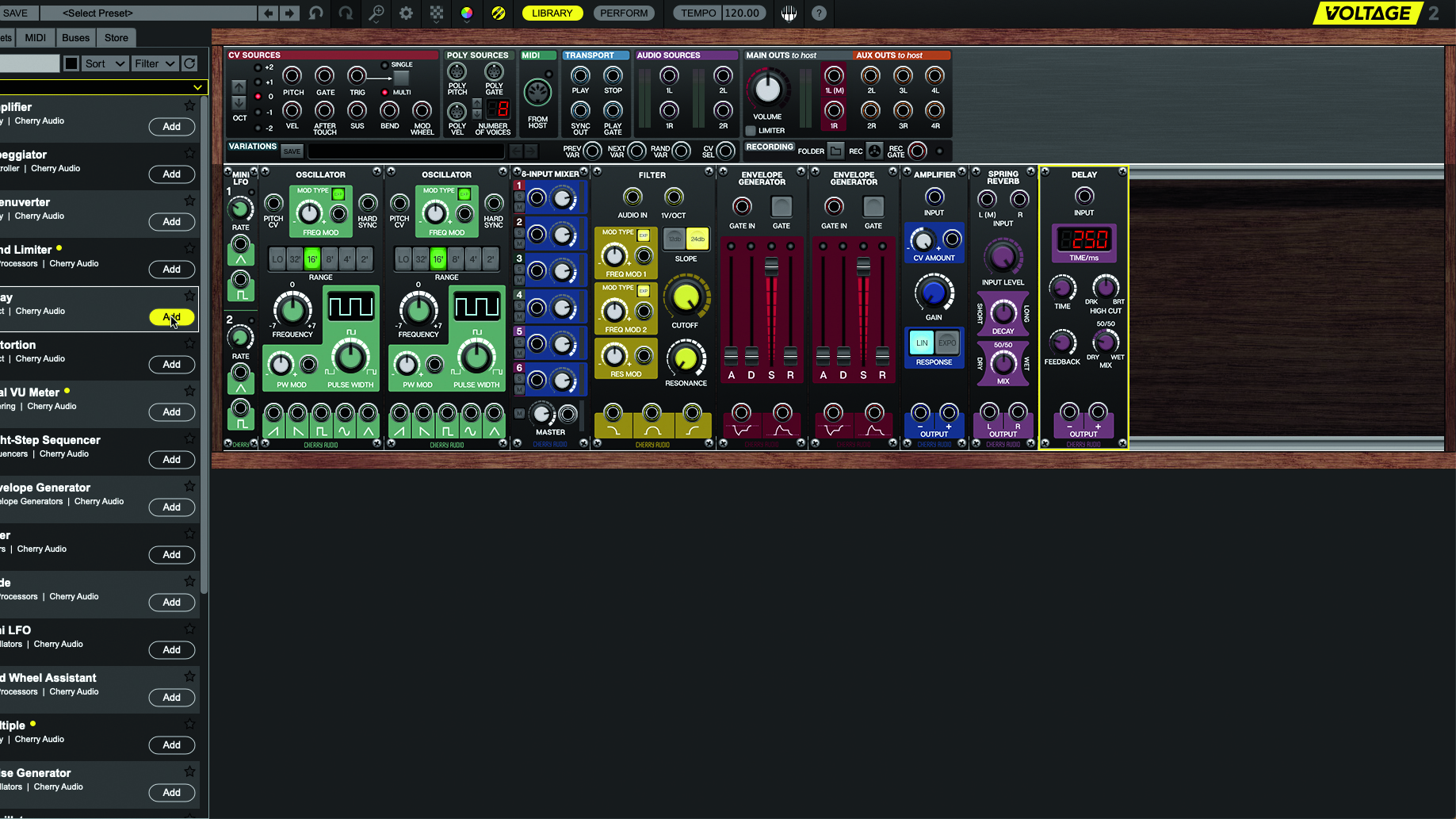
Step 1: We’ll use Cherry Audio’s Voltage Modular Nucleus to approximate Jarre’s ARP 2600 patch. Clicking New in the upper-left clears our rack. We’ll grab a Mini LFO and pair of Oscillators from the Library. We’ll get a 6-Input Mixer, a Filter, and a pair of Envelope Generators. We’ll also grab an Amplifier, a Spring Reverb, and a Delay module.
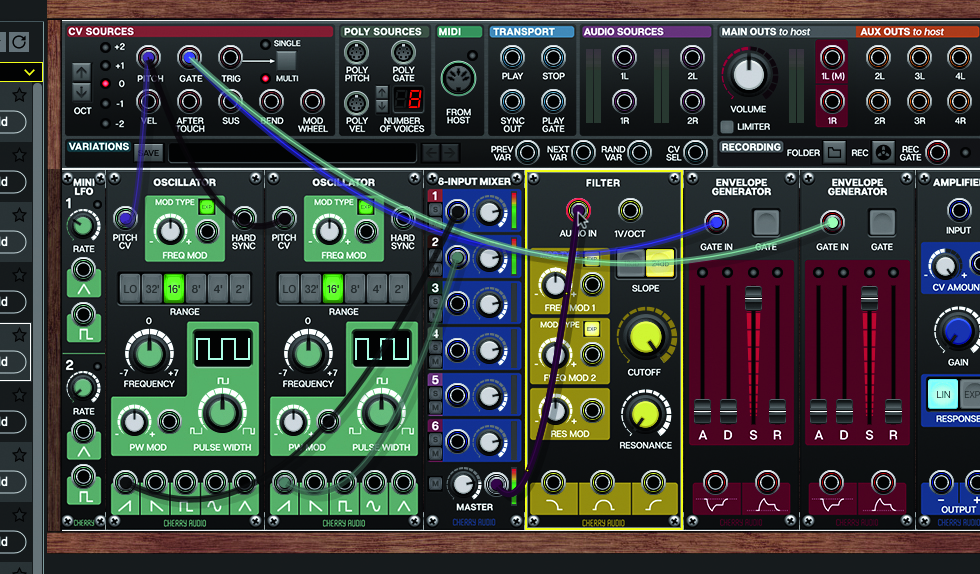
Step 2: Let’s start patching. We’ll run cables from the CV Sources’ Pitch jack down to each Oscillator’s Pitch CV jacks. We’ll run cables from the CV Sources’ Gate down to each Envelope’s Gate In jacks. We’ll patch our Oscillator’s Sawtooth jacks to the first two inputs of the Mixer module. The Mixer’s Master Output will go to the Filter’s Audio In.
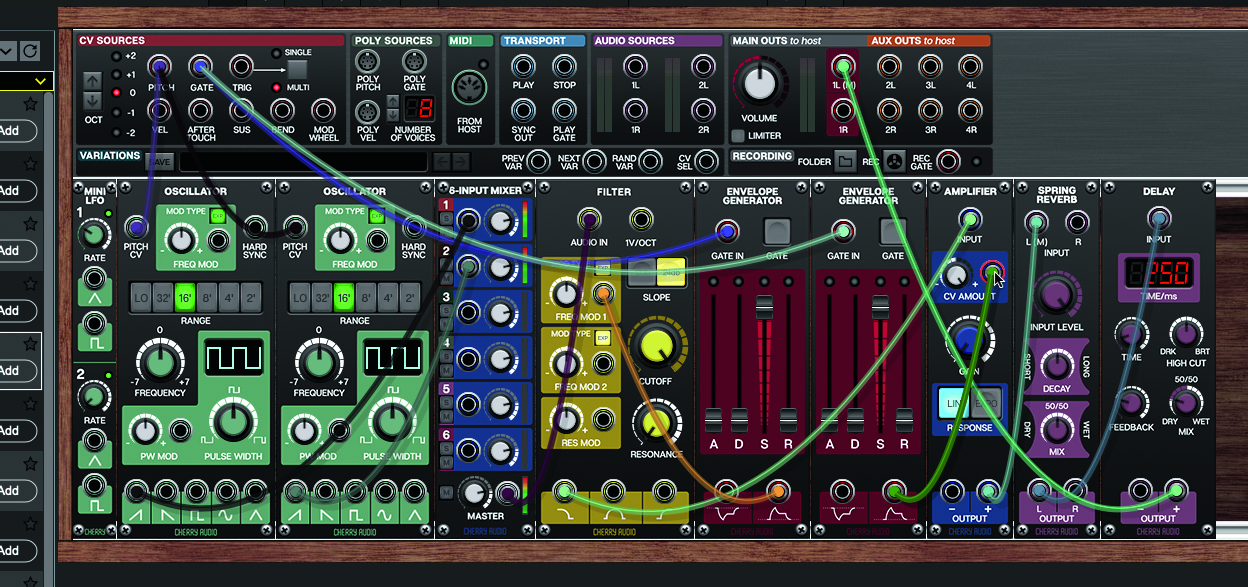
Step 3: The Filter’s Low-pass Output (bottom-left) goes to the Amplifier’s Input. The Amplifier’s ‘+’ Output goes to the Reverb’s L(M) Input, and the Reverb’s L Output to the Delay’s Input. The Delay’s ‘+’ Output goes to the Main Outs 1L(M) jack. Route the left Envelope’s Positive jack (bottom-right) to the Filter’s Freq Mod 1, and the right Envelope’s Positive Output to the Amplifier’s CV Amount.
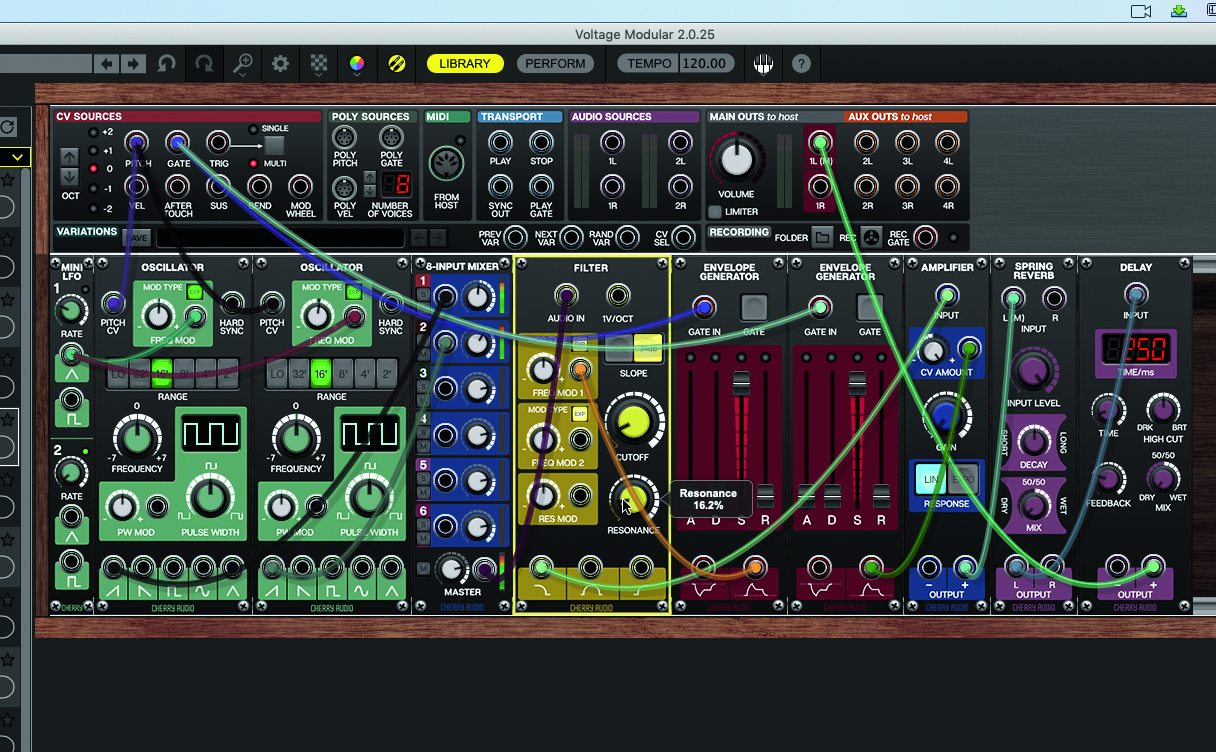
Step 4: Set both Reverb and Delay MIX fully dry for now. Patch the LFO’s top Output to each Oscillator’s Freq Mod jack. Give the Freq Mod knobs a tiny push in either direction. Turn the Mixer’s first two channels down a bit. Set one Osc’s Frequency to -0.03 and the other to 0.03. Go to the Filter. Turn the Cutoff down to around 30Hz and Resonance to 16%.

Step 4: Turn the FIlter’s Freq Mod 1 knob up nearly full. In the left Envelope, set the Attack to around 60ms, and the Release to over 7000ms. In the right envelope, the Attack should be about 65ms, the Decay fully up and the Release set to around 2400ms. It’s all a bit high pitched, so set each Oscillator’s Range to 32’.
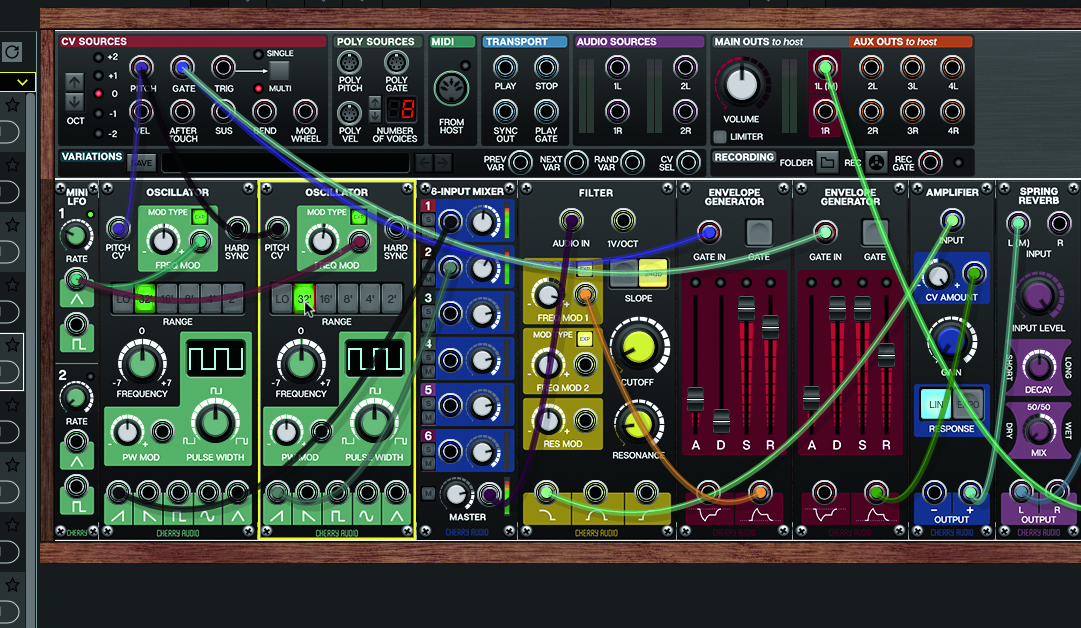
Step 5: Turn the FIlter’s Freq Mod 1 knob up nearly full. In the left Envelope, set the Attack to around 60ms, and the Release to over 7000ms. In the right envelope, the Attack should be about 65ms, the Decay fully up and the Release set to around 2400ms. It’s all a bit high pitched, so set each Oscillator’s Range to 32’.
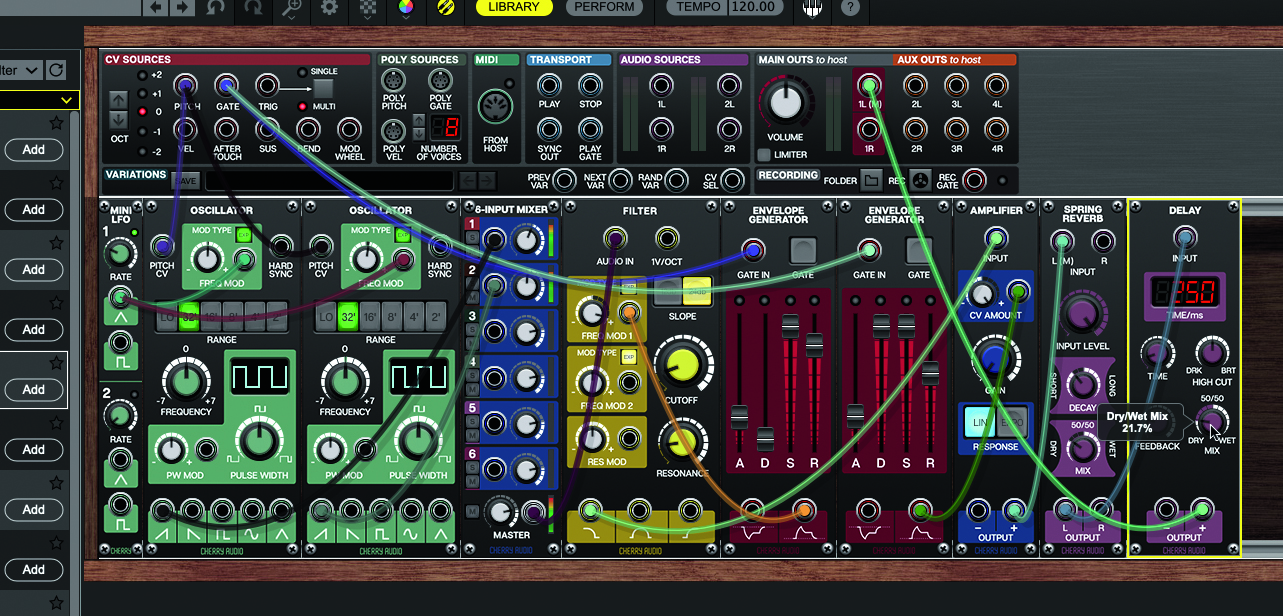
Step 6: Now adjust the Spring Reverb and Delay’s Dry/Wet Mix levels to taste. We’ll do a bit of fine-tuning to the various parameters. The patch is nicely responsive to the length of time notes are held, so experiment with performance style. This is obviously a simplified version of Jarre’s classic ARP 2600 patch. You can elaborate further upon it as you see fit.


Computer Music magazine is the world’s best selling publication dedicated solely to making great music with your Mac or PC computer. Each issue it brings its lucky readers the best in cutting-edge tutorials, need-to-know, expert software reviews and even all the tools you actually need to make great music today, courtesy of our legendary CM Plugin Suite.
“Excels at unique modulated timbres, atonal drones and microtonal sequences that reinvent themselves each time you dare to touch the synth”: Soma Laboratories Lyra-4 review
“A superb-sounding and well thought-out pro-end keyboard”: Roland V-Stage 88 & 76-note keyboards review










